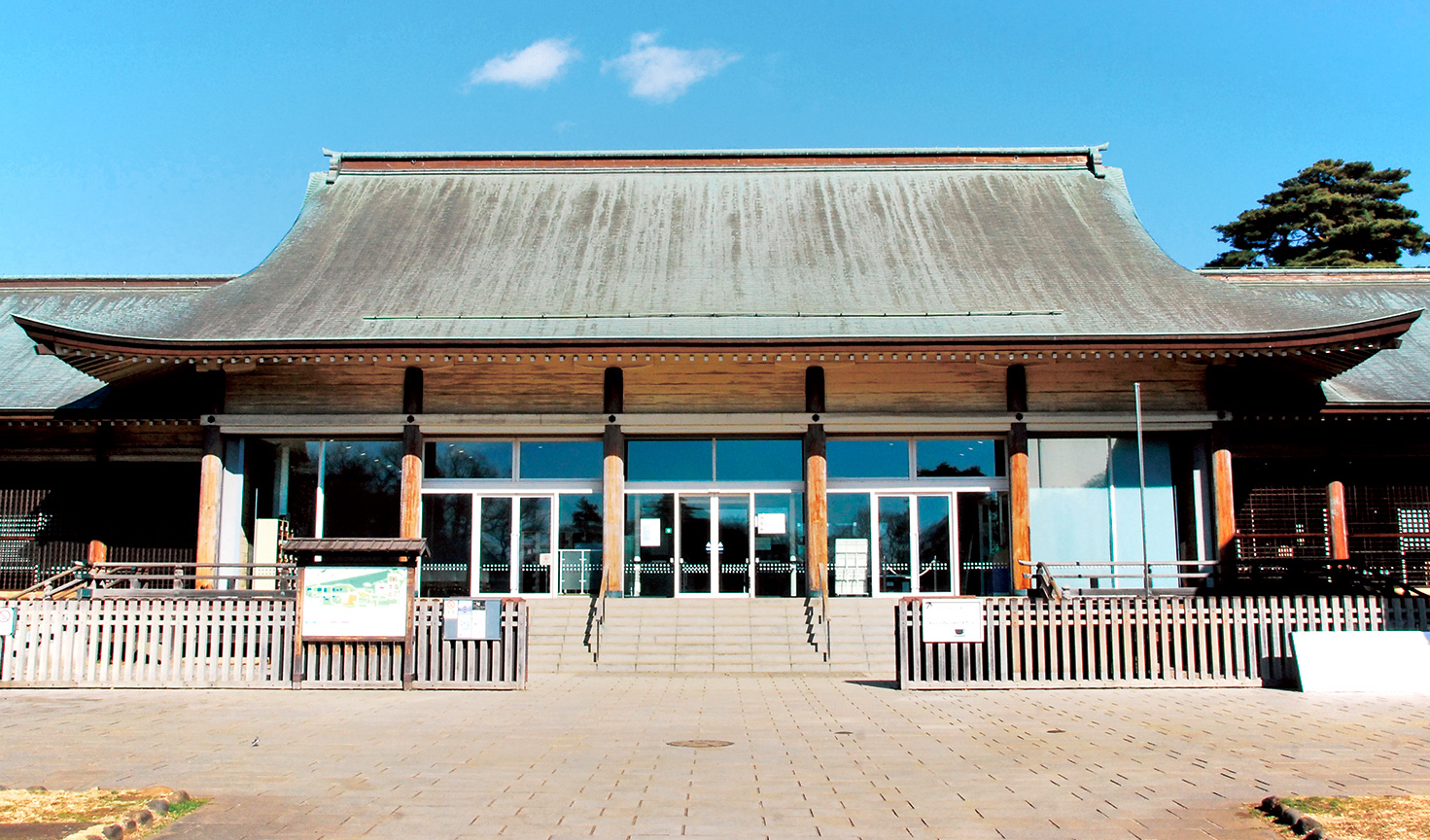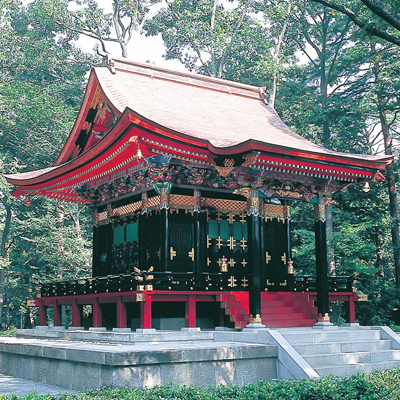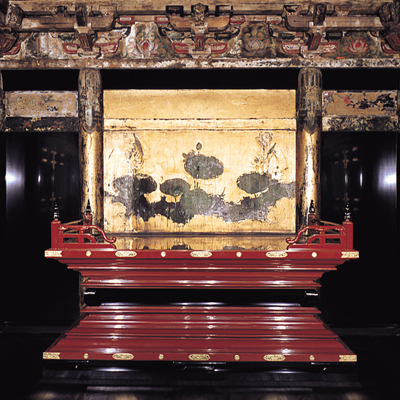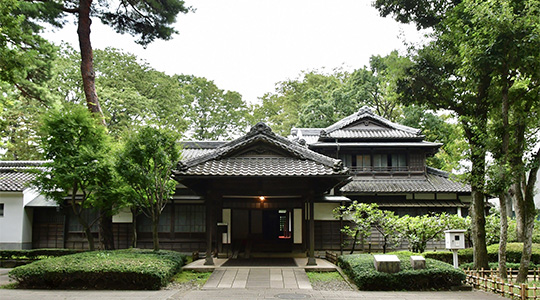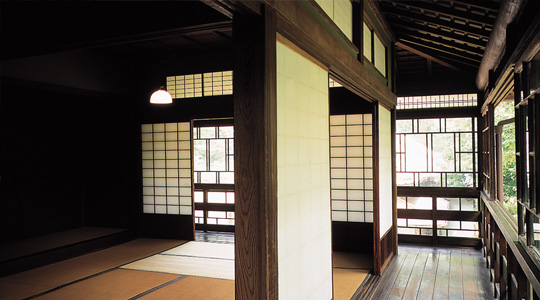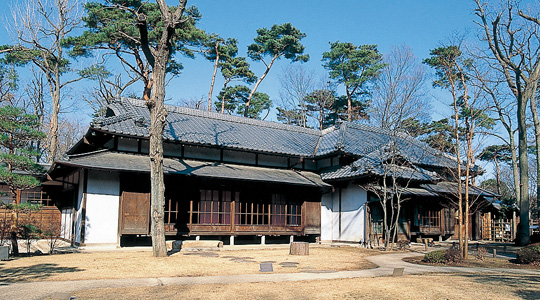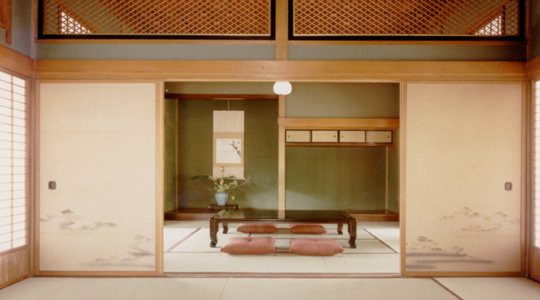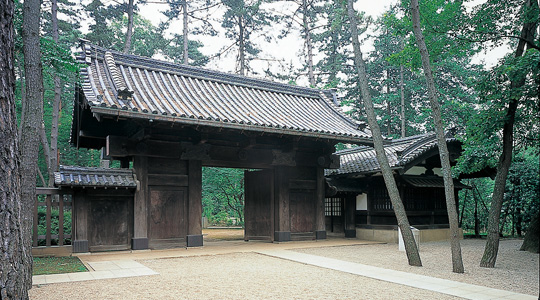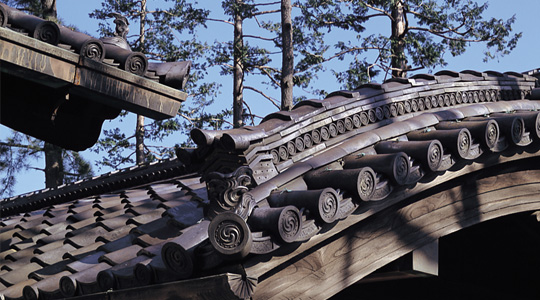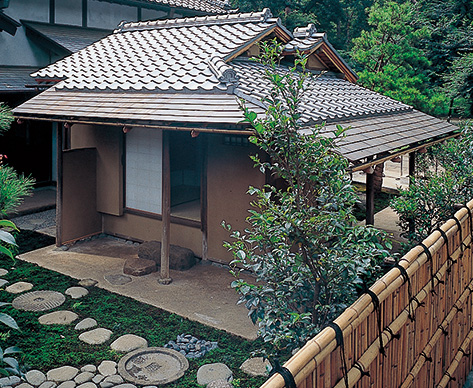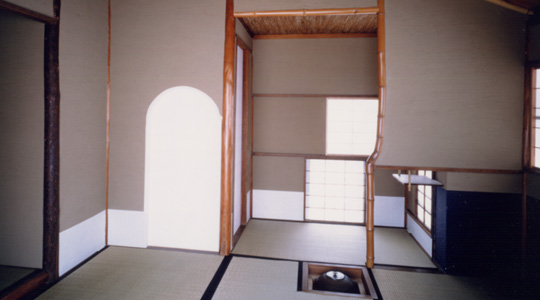- Home
- >
- Reconstructed Buildings
- >
- Reconstructed Buildings
- >
- Center Zone
Center Zone
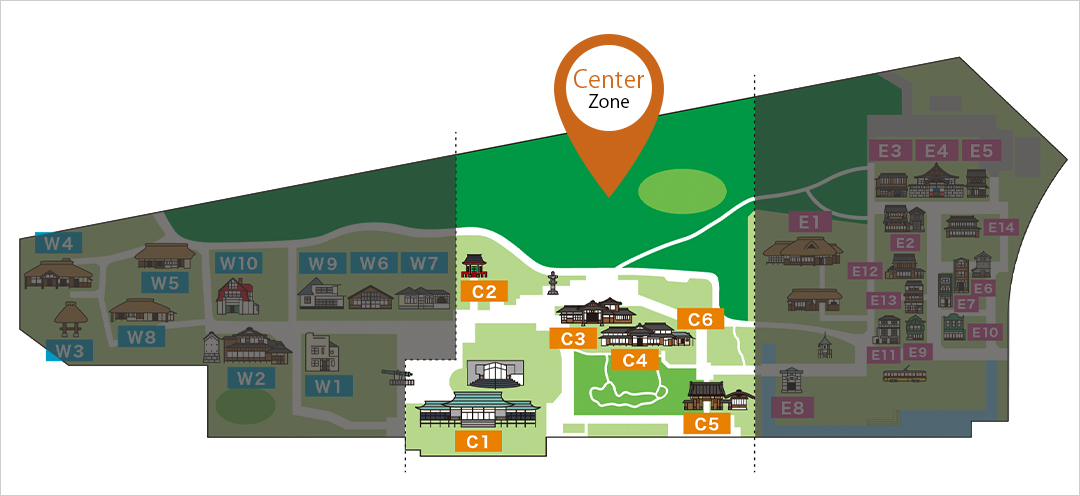
This zone includes the Visitor Center (Former “Kokaden” Palace) , the main entrance of the museum, the exhibition room, and restored historical buildings such as the house of Korekiyo Takahashi and Jisho-in mausoleum (Otama-ya) .
| C1 | Visitor Center (Former “Kokaden” Palace) |
|---|
- Name
- Visitor Center (Former “Kokaden” Palace)
- Built
- 1940
- Former location
- Chiyoda, Chiyoda Ward
- Explain
-
This building was built in the square in front of the Imperial Palace in 1940 as a temporary ceremony hall for the 2,600th anniversary of the first Emperor’s accession to the throne. It was moved to Koganei Grand Green Space (now Koganei Park) in 1941, and reconstructed as the Visitor Center of this museum.
| C2 | Jisho-in Mausoleum (Otama-ya) Tangible Cultural Property designated by the Tokyo Metropolitan Government |
|---|
- Name
- Jisho-in Mausoleum (Otama-ya)
- Built
- 1652
- Former location
- Tomihisa-cho, Shinjuku Ward
- Explain
-
This temple was constructed by Princess Chiyo, wife of the Owari Lord, Mitsutomo Tokugawa, to hold a service for her mother Ofuri-no-kata (wife of the third shogun, Iemitsu Tokugawa).
| C3 | House of Korekiyo Takahashi |
|---|
- Name
- House of Korekiyo Takahashi
- Built
- 1902
- Former location
- 7-chome, Akasaka, Minato Ward
- Explain
-
This is the main building of the house of Korekiyo Takahashi, who played an important role in Japanese politics from the Meiji period to the beginning of the Showa period. It is made entirely of hemlock fir, and the dining room has parquet flooring. The second floor was used as Takahashi’s study and bedroom, and it was the site of the Feb. 26 coup in 1936.
- <The garden of Korekiyo Takahashi’s house>
- The garden of Takahashi’s house in Akasaka, Minato Ward, is partly reconstructed. It contains a stream of water springing from a well surrounded by a curb and a lantern supported by legs (yukimi style). Takahashi is said to have enjoyed sunbathing on the lawn and strolling in the garden.
| C4 | Second House of the Nishikawa Family |
|---|
- Name
- Second House of the Nishikawa Family
- Built
- 1922
- Former location
- 2-chome, Nakagamicho, Akishima City
- Explain
-
This villa was constructed as a retreat and guesthouse by the businessman Izaemon Nishikawa, who established a leading silk-reeling company in the Kita-tama area. Built sometime between the Taisho period and the beginning of the Showa period, when the sericulture and silk reeling industries in the area were at their peak, it is made of carefully selected high-quality materials.
| C5 | Gate of Date Family Residence (Collection of the former Musashino Folklore Museum) |
|---|
- Name
- Gate of Date Family Residence (Collection of the former Musashino Folklore Museum)
- Built
- Taisho period
- Former location
- 2-chome, Shirokane, Minato Ward
- Explain
-
This is the front gate of the house built in Tokyo in the Taisho period (1912-1926) by the Date family of Uwajima Domain. It reproduced the style of feudal lord house gates, and a guard house with a curved roof is attached to the side. It is made entirely of Japanese zelkova, and there is a wood-carved Date family crest on the beam atop the posts.
| C6 | Tea Arbor “Kaisuian” |
|---|
- Name
- Tea Arbor “Kaisuian”
- Built
- Taisho period
- Former location
- 5-chome, Nishiogi-kita, Suginami Ward
- Explain
-
This is a tearoom built by Soju (Kaisui) Yamagishi, a tea-ceremony master of the So-henryu school. It was purchased and moved to Nishi-ogikubo in 1957 by the dramatist Nobuo Uno. The very small room is covered with three regular-sized tatami mats and one smaller mat.
![]() Reconstructed Buildings
Reconstructed Buildings
© EDO-TOKYO OPEN AIR ARCHITECTURAL MUSEUM All rights reserved.

























